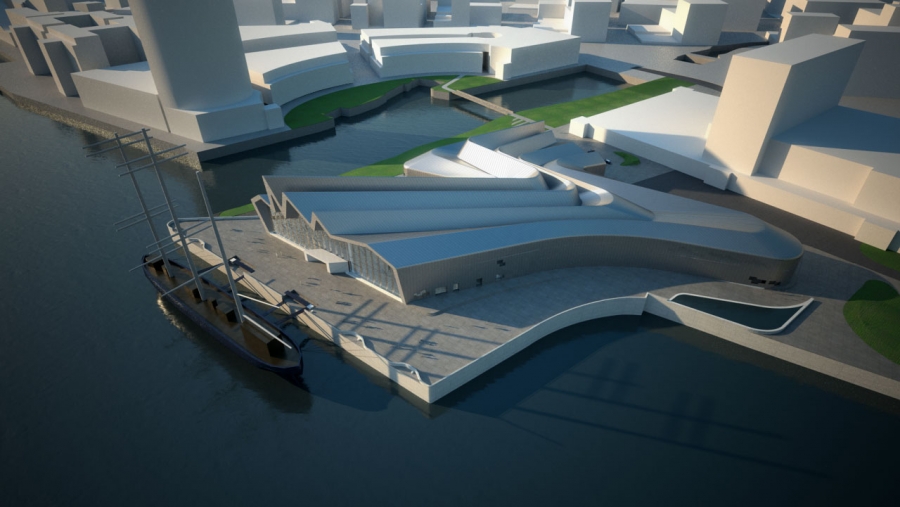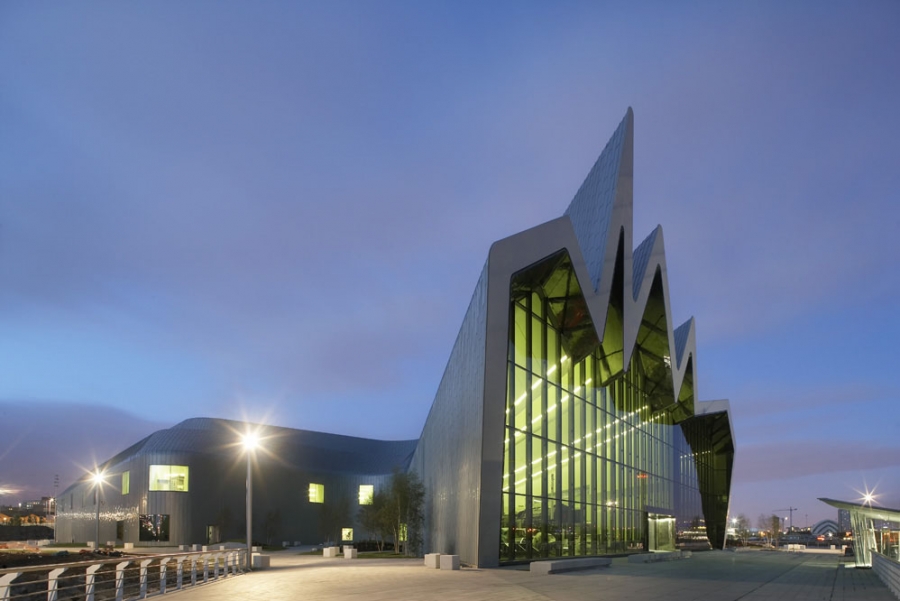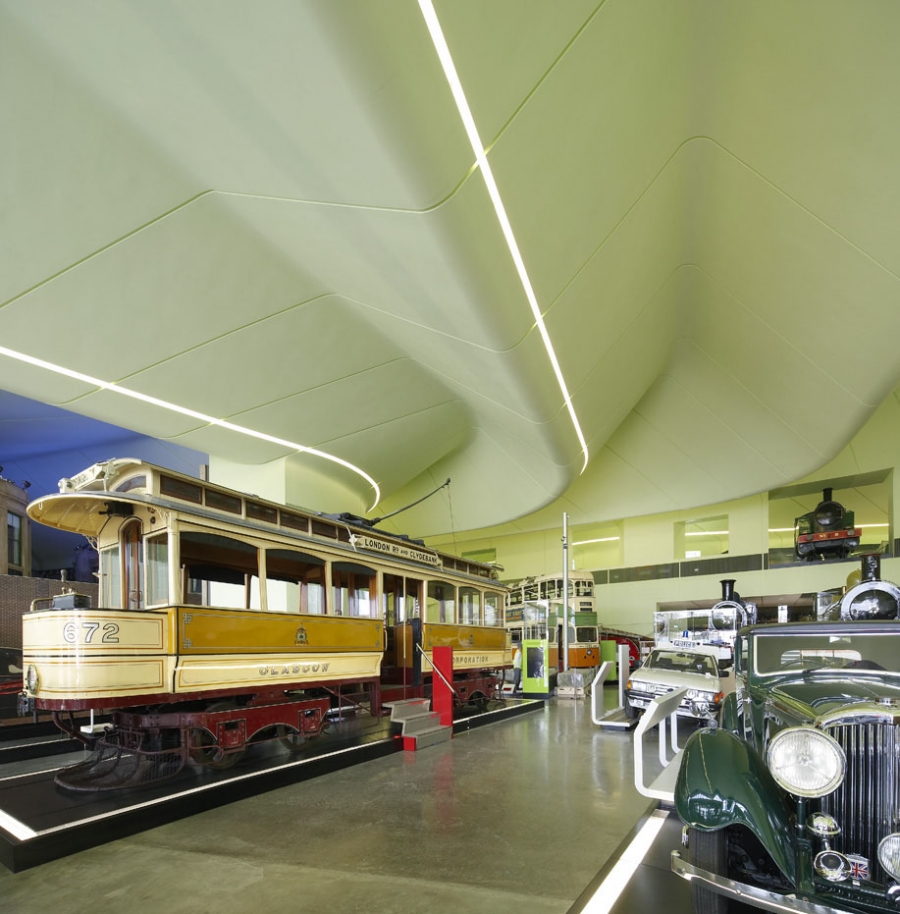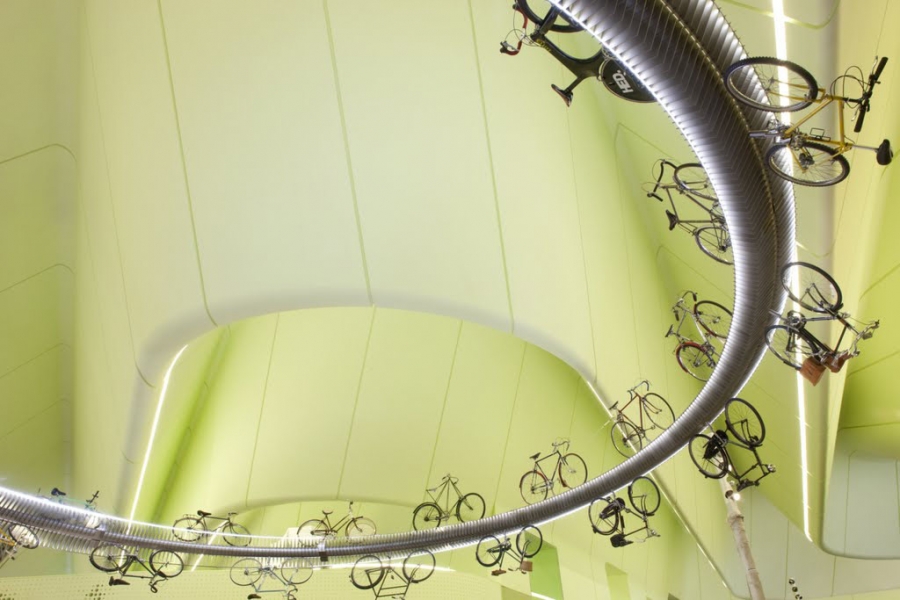Video
The fifth and final article in Buildipedia’s series on the Riverside Museum takes a look at some of the less visible aspects of this spectacular building: the HVAC system, acoustic engineering, and more.
“Complex geometry” is a phrase that successfully sums up Zaha Hadid’s Riverside Museum of Transport and Travel in Glasgow, Scotland – particularly its roof plane. According to Rod Manson, partner and engineer with Buro Happold, “The roof was commonly referred to as the ‘fifth elevation’ on the project.” Its zigzag form, coupled with the vast size of the exhibition space beneath, created several challenges for the engineers tasked with integrating the building systems while ensuring a streamlined look, both inside and out. “It was very important to the architect that the MEP systems be invisible and blend in with the overall building form,” explains Manson. He shared a few of Buro Happold’s clever solutions.
Super Trenches and Service Grills
Because air handling units and chillers could not be located atop the pleated roof, nor could ductwork be accommodated within its depth, the engineers consolidated equipment within a plant room and ran ducts and other building services through "super trenches" located beneath the concrete slab and service grills along the perimeter walls.
The roof’s profile is continuous over the plant room so it is invisible to the naked eye. The zinc roof panels are perforated to allow for ventilation, and the room is detailed and waterproofed as an exterior space. By working with a conservation team, the engineers were able to significantly reduce the footprint of the plant room from 30% of the building’s area to 15%.
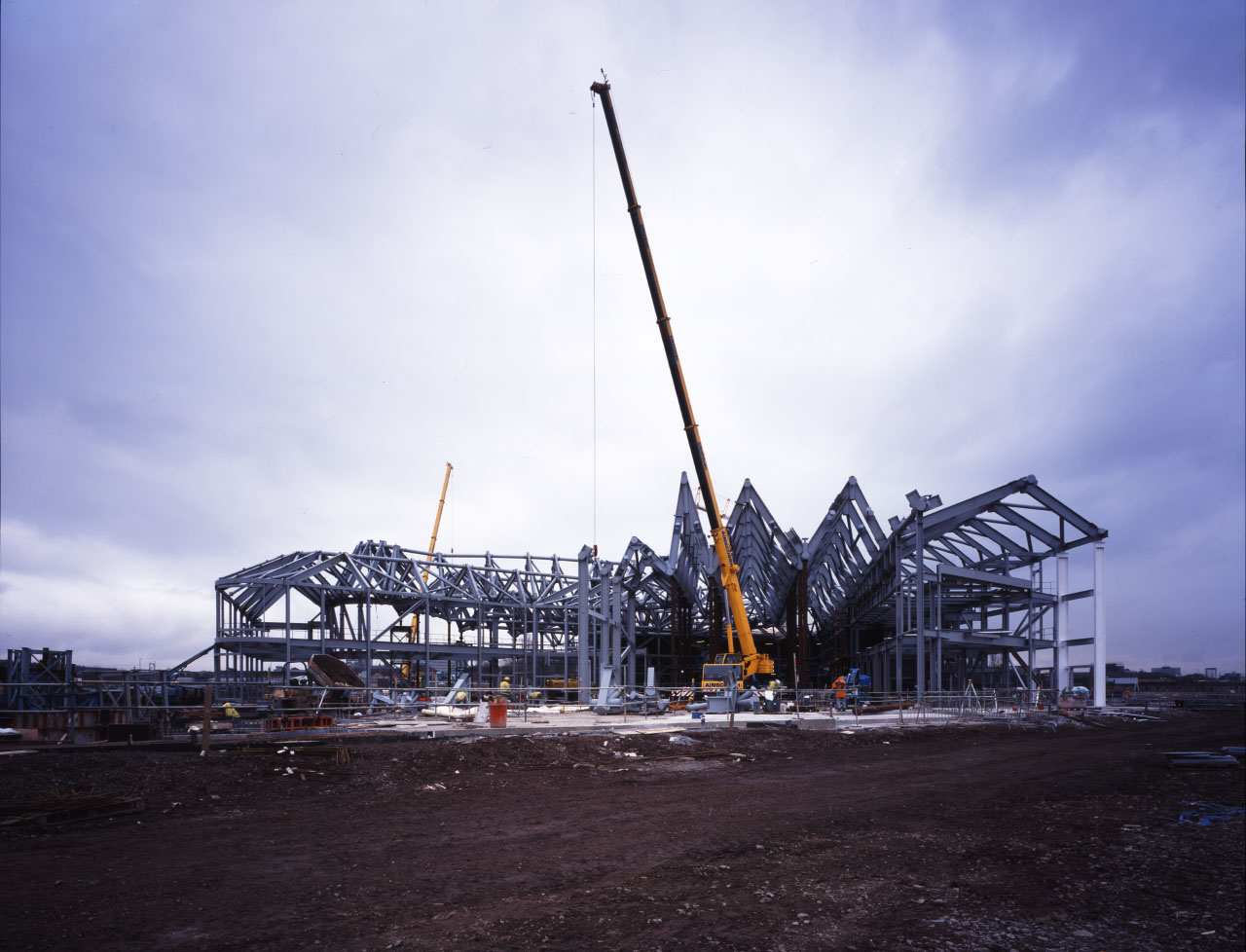
Buro Happold specified a low-energy, all-air system for heating, cooling, humidification, and dehumidification the large, open exhibition space within the Museum. Ducts run along the perimeter wall, and heated and cooled air is distributed throughout the space via a service grill located several meters above the floor. Its powder-coated louvers also conceal emergency lighting, security cameras, and fire protection sensors.
The exhibitions change frequently and often contain interactive components, so the engineers had to build in flexibility while keeping their systems out of sight. To hide building services, including pipes, IT cables, lighting, and heating, the engineers created tunnels below the floor. These super trenches extend from beneath the plant room to reach all areas of the building.
In Case of Fire
Due to the sheer volume of the Museum’s main exhibition space, it did not initially comply with Scotland’s fire protection codes. The engineers had to demonstrate that the plan allowed for safe egress. In this case, the large volume worked in their favor: it creates a large smoke reservoir above the exhibition space, allowing occupants adequate time to escape in the event of an emergency. Therefore, longer travel distances could be accommodated between exits. Fire curtains were also used for compartmentation between the exhibition hall and adjoining areas, such as the cafe, office wing, and educational spaces.
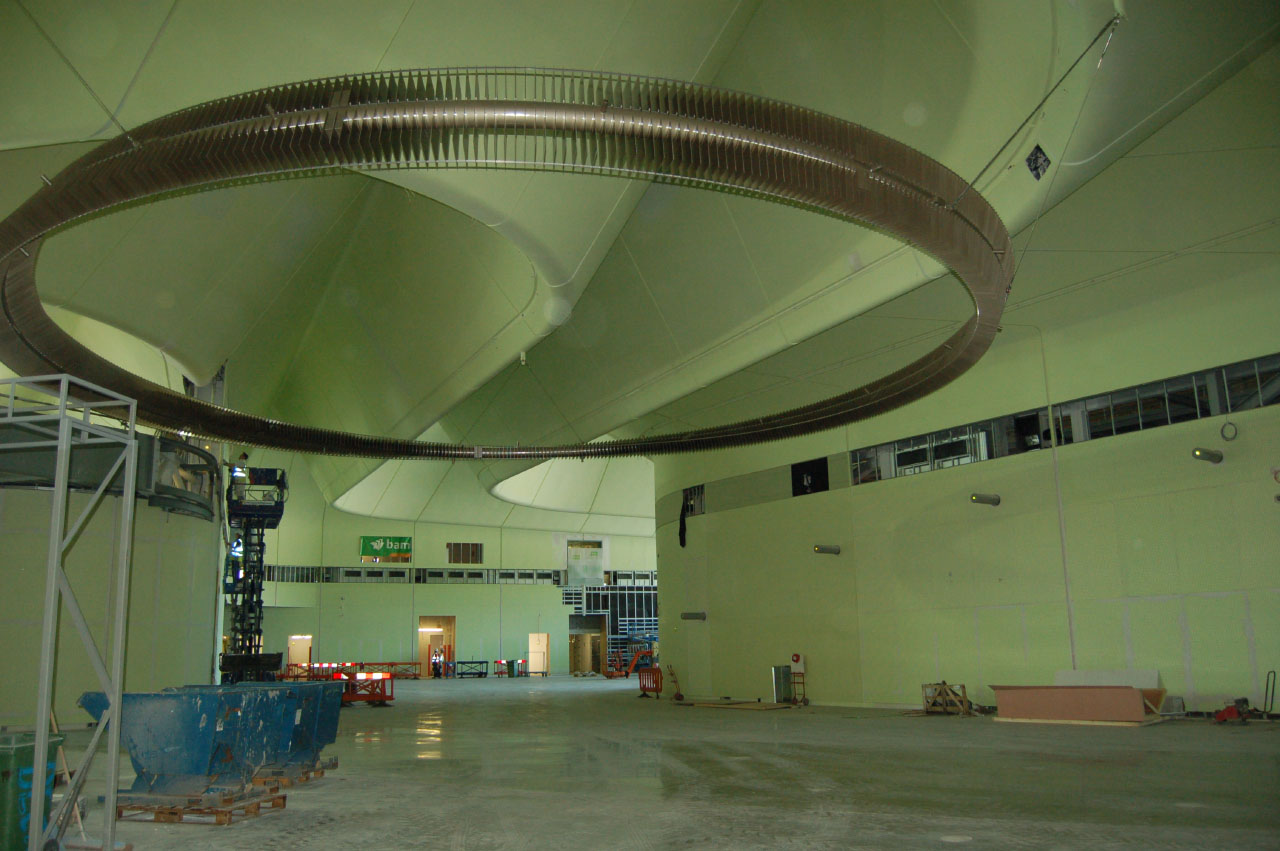
Establishing Energy Efficiency
Although the design team didn’t apply for formal certification, they followed the principles of BREEAM (Building Research Establishment Environmental Assessment Method), the U.K. standard that is similar to LEED. The site itself was inherently green, because the Museum was built on a former brownfield site, and its location provides access to public transportation. The engineers improved upon the Museum’s energy efficiency by specifying a condensing boiler unit, daylighting controls for artificial lighting, and installing a building management system that allows the client to monitor energy use. The building is also highly insulated and airtight along both the roof and perimeter walls. The north and south facades admit plenty of natural light yet mediate solar heat gain thanks to triple-insulated, high-performance solar glazing with overhangs.
Throughout the design process, the engineers employed energy modeling and simulation to ensure that all systems were coordinated as efficiently as possible. Because Buro Happold was responsible for designing both the structure and building systems in house, the process was that much more seamless – as Manson describes it, “an integrated engineering approach.”
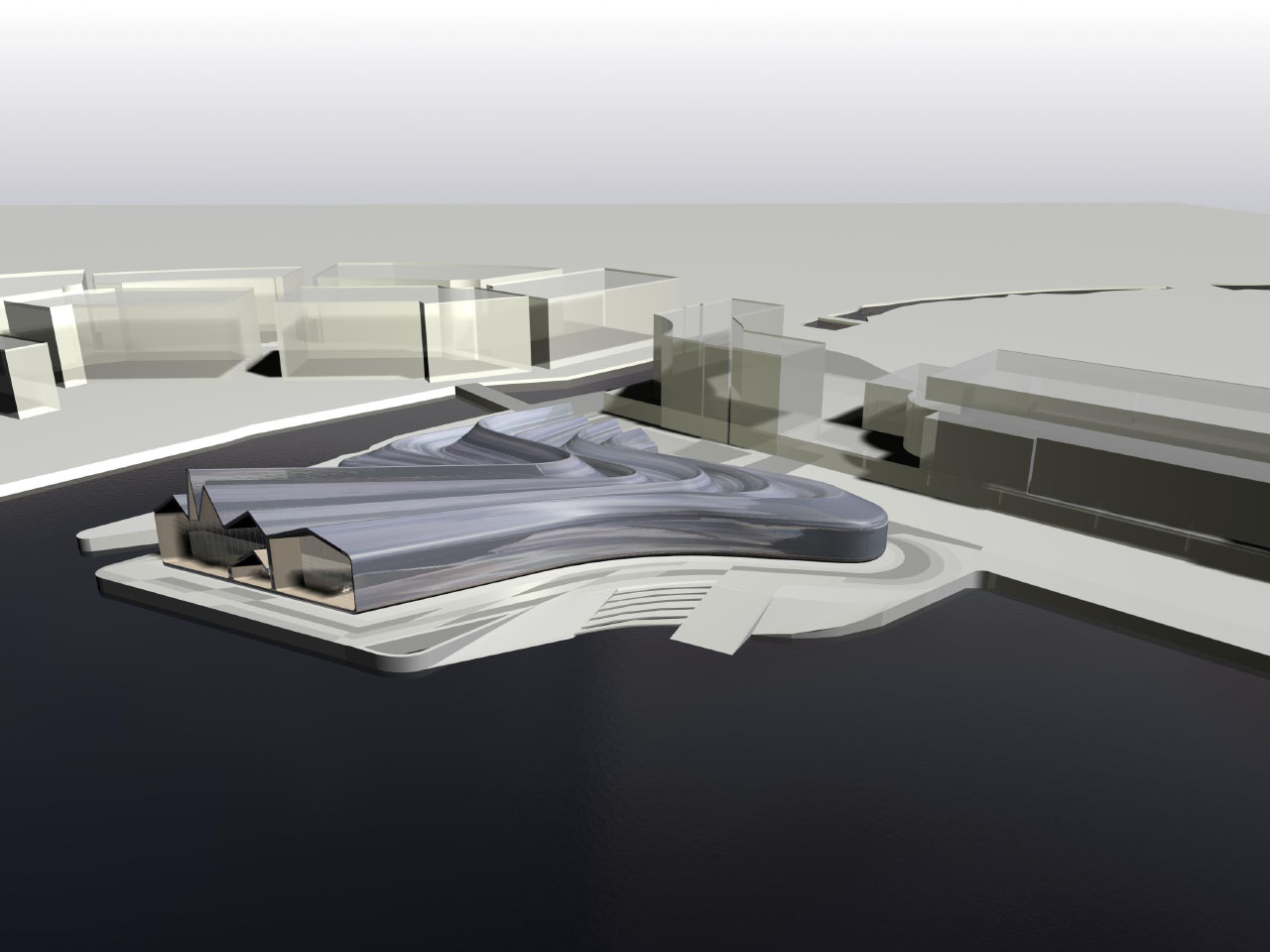
Acoustical Strategies
A large, open space lined with hard surfaces is an ideal backdrop for displaying a range of ever changing exhibitions, including many plus-size transportation artifacts, but it doesn’t create an ideal situation acoustically. According to Alistair Meachin, an associate at Buro Happold, preserving the sleek look of the space while controlling reverberant sound to prevent a cacophony of noise and ensure that PA announcements could be clearly heard involved dual strategies.
First, the engineers specified acoustically absorbent wall surfaces made of perforated facing that conceals a fibrous felt backing. The base of the walls are clad with durable perforated glass fiber-reinforced gypsum (GRG) panels, and more economical perforated plasterboard was used on upper portions of the walls. Second, the engineers concealed horn loudspeakers within the recessed “service strips” in the walls. “Buro Happold carried out electro-acoustic simulations to predict performance off the PA system and to ensure that it would be intelligible enough,” explains Meachin.
Modern architectural designs demand cutting-edge engineering solutions; often these solutions must be tailor-made to fit a specific building project. Stringent energy usage requirements complicate the situation. Modeling and simulation tools help in the formulation of these creative engineering solutions – and human ingenuity must do the rest.

Murrye Bernard
Murrye is a freelance writer based in New York City. She holds a Bachelor's degree in Architecture from the University of Arkansas and is a LEED-accredited professional. Her work has been published in Architectural Record, Eco-Structure, and Architectural Lighting, among others. She also serves as a contributing editor for the American Institute of Architects' New York Chapter publication, eOculus.
Website: www.murrye.com






































